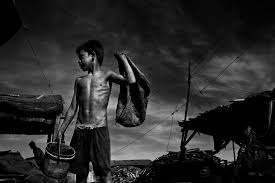From FEE (Foundation for Economic Education) (quoting the Wall Street Journal):
During the 20 years before the War on Poverty was funded, the portion of the nation living in poverty had dropped to 14.7% from 32.1%. Since 1966, the first year with a significant increase in antipoverty spending, the poverty rate reported by the Census Bureau has been virtually unchanged…Transfers targeted to low-income families increased in real dollars from an average of $3,070 per person in 1965 to $34,093 in 2016…Transfers now constitute 84.2% of the disposable income of the poorest quintile of American households and 57.8% of the disposable income of lower-middle-income households. These payments also make up 27.5% of America’s total disposable income.
The government’s programs have made matters worse for the poor, relative to others:
By 1975 the lowest-earning fifth of families had 24.8% more families with a prime-work age head and no one working than did their middle-income peers. By 2015 this differential had risen to 37.1%…The War on Poverty has increased dependency and failed in its primary effort to bring poor people into the mainstream of America’s economy and communal life.


